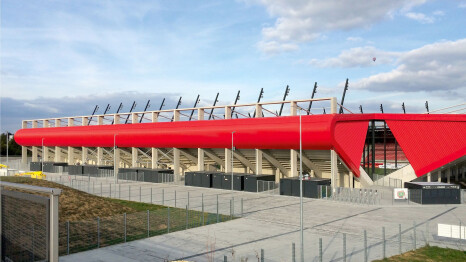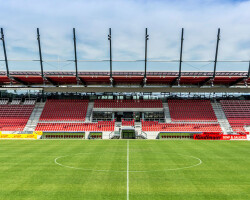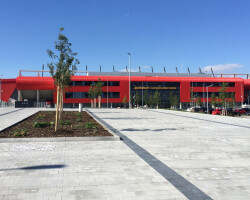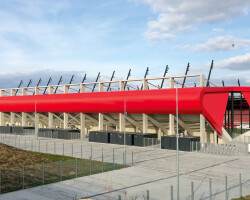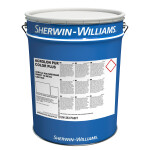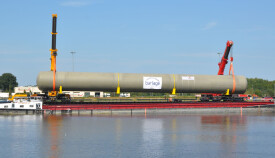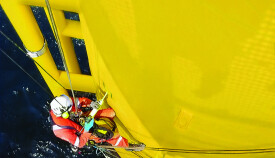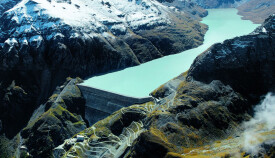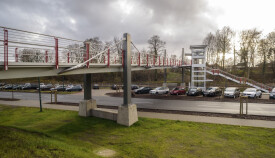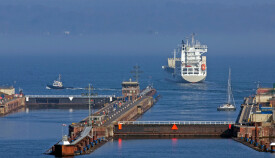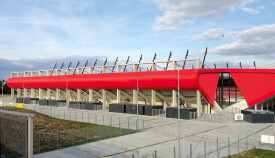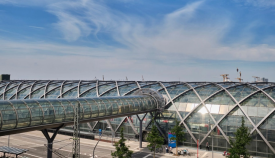Viewed from the outside, it is above all the wing-shaped curved building envelope in red, which creates high recognition and identification for the Regensburg Stadium. Red trapezoidal sheet metal elements clad the grandstands and continue on the main building on the east side. In doing so, they consistently take up the club colour of SSV Regensburg. A clever eye-catcher is also the floodlight fingers, which rise visibly high above both main stands. For this purpose, steel beams were continued upwards in the eight-metre grid and equipped with spotlights for glare-free lighting of the playing field.
With a capacity of around 15,000 visitors, the Jahnstadion Regensburg is a medium-sized stadium. The main tenant and user of the stadium is SSV Jahn Regensburg, which plays its home games there. However, the stadium, which offers a variety of uses, is generally available as an event and conference centre to all potential users for sporting and non-sporting activities.
Permanently red
The Jahnstadion Regensburg obtains its distinctive appearance from its outer steel envelope. In addition to the protection of the technical steel structure of the façade and the roofs, particular attention was therefore paid to the colour-stable coating in the typical club red. The steel floodlight fingers as well as the visible steel beams have a protective and colour coating in the contrasting colours dark grey or light grey. In order to ensure optimum protection of the steel components, which are classified in corrosivity category C3 high, the processing company first applied the Macropoxy® EP Color primer, a 2-component, robust and fast-curing epoxy resin coating with zinc phosphate as an active anti-corrosive pigment.
Acrolon® PUR Color (new product: Acrolon® PUR Color Plus), a polyurethane-based top coat, complements the system. In the corresponding RAL shades RAL 3020 (traffic red), RAL 7016 (anthracite grey) and RAL 7035 (light grey), it provides for the silk-matt colouring of the components. 90 percent of the coating work was done in the factory and 10 percent on the building site. A particular challenge was the size of the parts and thus the different methods of preparing the steel.
Today, modern stadium buildings have to meet a high standard of security, functionality and cost-effectiveness, as well as identity and aesthetics. This would hardly be conceivable without the use of precast concrete elements and other materials such as steel or trapezoidal sheet metal. The connection, design and long-term protection of these elements requires high-performance system solutions – as with the corrosion protection, for example. In the Jahnstadion Regensburg, this aesthetically sophisticated design was optimally executed.

